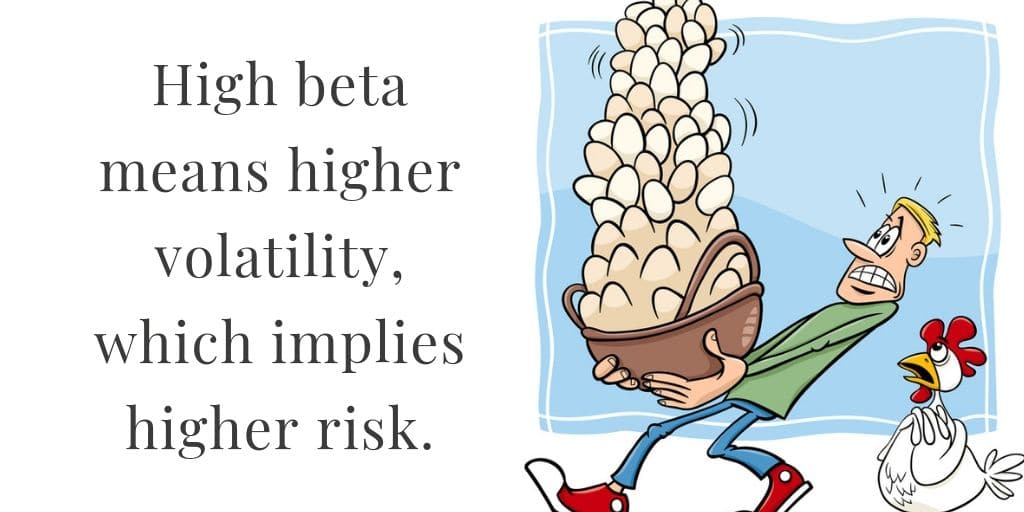Beta is a measurement of share price movement as compared to the overall market. In other words, High beta means higher volatility, which implies higher risk.
What is High Beta
Beta is a measurement of share price movement as compared to the overall market. The beta is a ratio of variation in prices of the stock to the market for a specified period.
I can take any Sensex Listed Companies and compare its beta with the index. It will give me the variation in the share price of the stock as compared to the variety in Sensex for a given timeframe.
- If a stock has a beta of 1.0, it indicates its price highly correlates with Sensex. It means the return when investing in such stock will be pretty much in line with Sensex.
- A less than 1.0 beta means that the stock is less volatile than Sensex. So in a falling market, the stock will fall less, but it can also mean in a rising market, the returns aren’t able to beat Sensex.
- A beta of greater than 1.0 indicates that the share price is more volatile than Sensex. So in a falling market, the correction in the stock price will be sharper, but in a rising market, the stock will outperform the indices.
- Some stocks even have a negative beta, which means they move in the opposite direction to the index. So in a falling market, they tend to rise and vice versa.
So a beta much greater than one is termed as high beta stocks.
What is the Use of Beta / High Beta?
Generally, the stocks will tend to be more volatile when compared to the underlying index. There will be very few stocks which have a beta less than 1 for a very elongated period.
Now the question is, how much high beta is and isn’t right?
For a long-term buy and hold investor, the lower the beta, the better. It means the stock is much less volatile.
High volatility may not always be good for the investor to remain invested. If a stock moves up or down by 5% in a day, it can mean the investor can become vary of loosing too much money in a day, or it can mean the investors make handsome money in a day and books out. In either case, the high beta of the stock works against the investor sentiments.
High beta stocks are more for active investor and traders.
An investor finds more value when investing in stocks where it overreacts both on the up and the downsides. Stocks become great value because of their higher volatility because they overreact on the downside. When the tide settles, the overreaction on the upside is a way to book out.
The low beta stock may not go down enough to be genuinely cheap and provide value.
So as a passive buy and forget investor opt for the low beta but more active investors, one may like to see more volatility to make the most of the market movement.
What is Nifty High Beta 50 (NIFTYHBI)?
NSE has constituted an index for high beta stocks known as Nifty High Beta 50 or NIFTYHBI.
Here is the official PDF document for NIFTYHBI.
It constitutes of stocks that have high Beta as compared to NIFTY 50.
Is High Beta a Measure of High Risk?
Beta is a measure of volatility and not a direct measure of risk. Volatility implies risk, and so beta indirectly is a measure of risk.
For example, if Sensex rises (or falls) by 10%, a stock with a beta of 1.2 will probably increase (or decrease) by 12% and a beta of 1.5 will likely increase (or decrease) by 15%.
As the fall is more in stock with the higher beta, it is riskier, but it also means in the rising market, the returns are subdued.
So yes indirectly high beta is a measure of high risk.
Beta isn’t always a calculation of stocks comparing to indices.
Even the general return, when investing in the equity market can have beta as compared to the stable fixed income returns.
When the variation in beta is less when compared to investing in the equity as compared to fixed income, people will opt out of the riskier returns and move into the risk-free returns.
High beta means the investor moves on to the riskier investment for better returns.




Leave a Reply